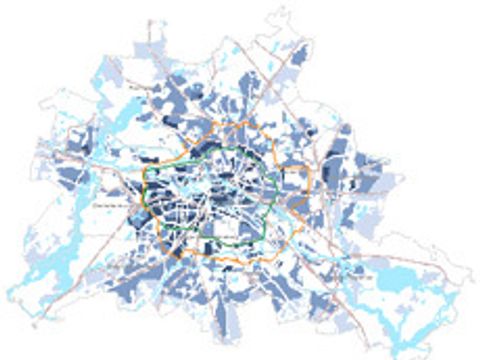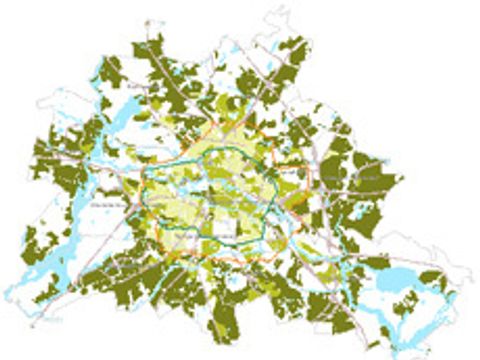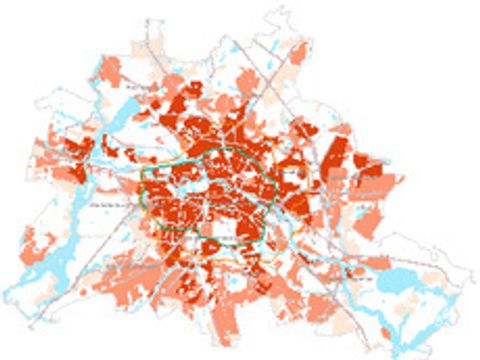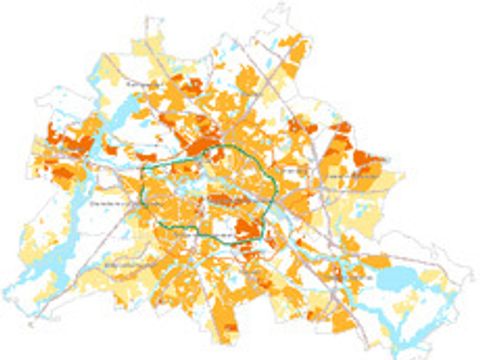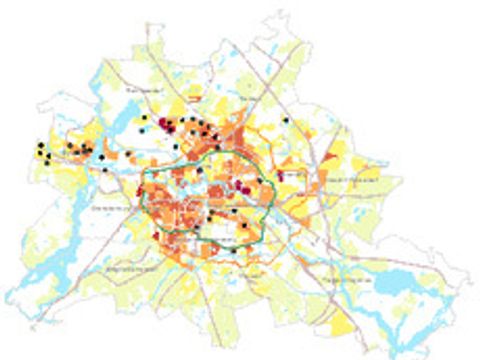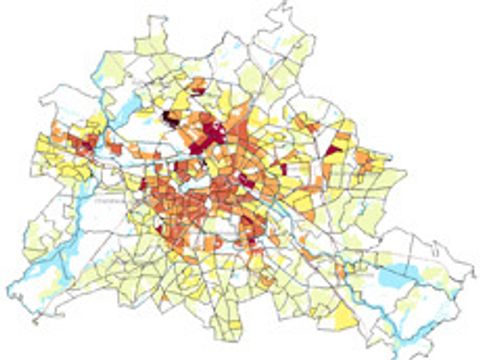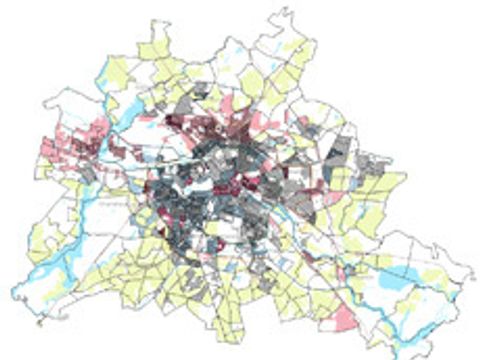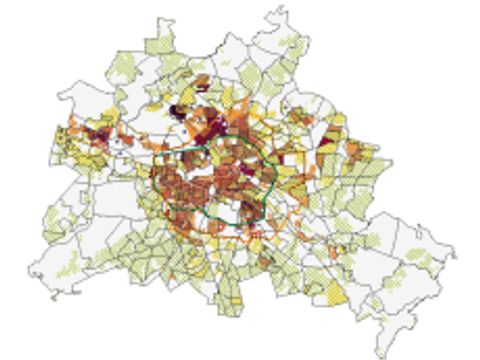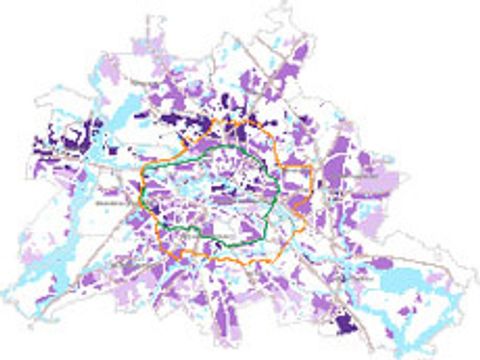
Image: Umweltatlas Berlin
09.01.1 Noise Load 2012
A monetary value was attached to the noise impact associated with the socio-demographic structure in order to determine the different degrees of burden of core indicator 1 of Berlin’s approach to environmental justice. The distribution indicates that the noise burden increases moving in from the periphery towards the city centre. 09.01.1 Noise Load 2012

